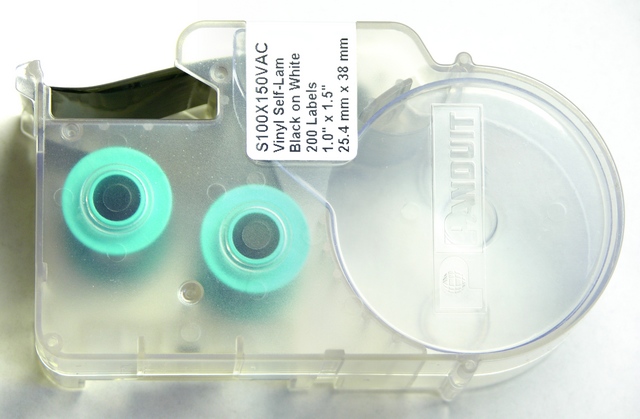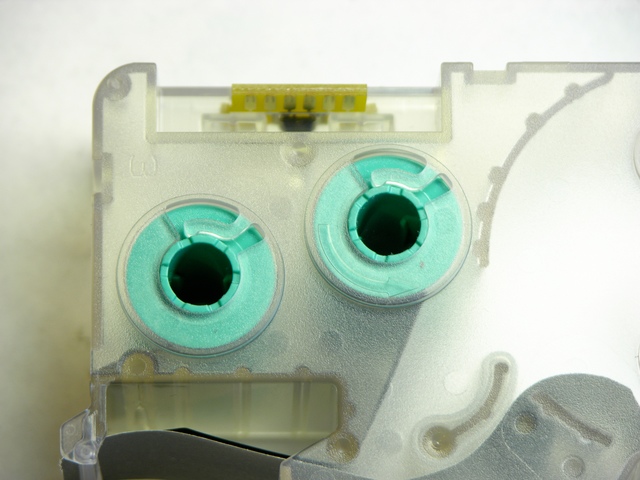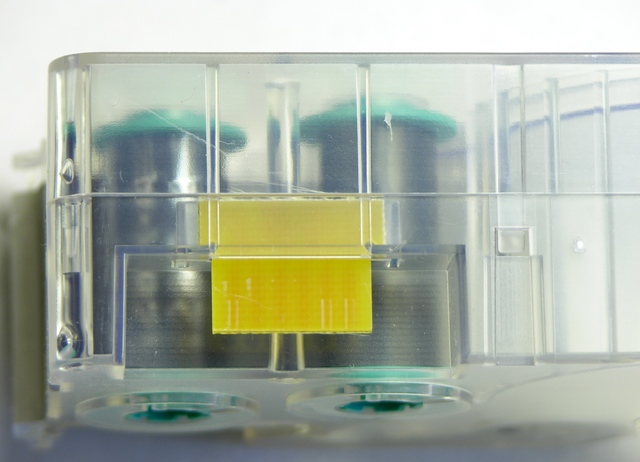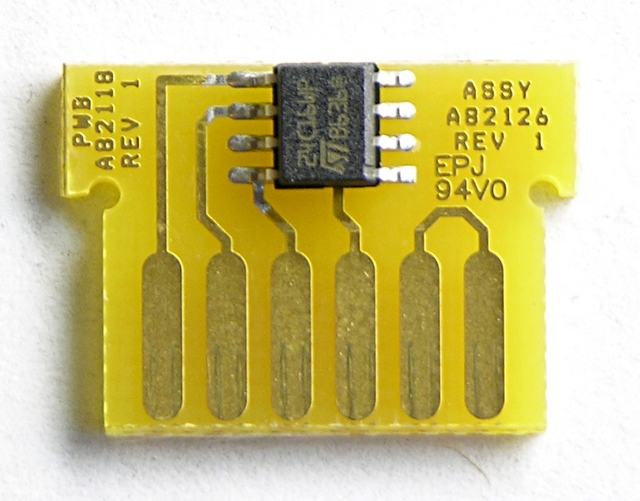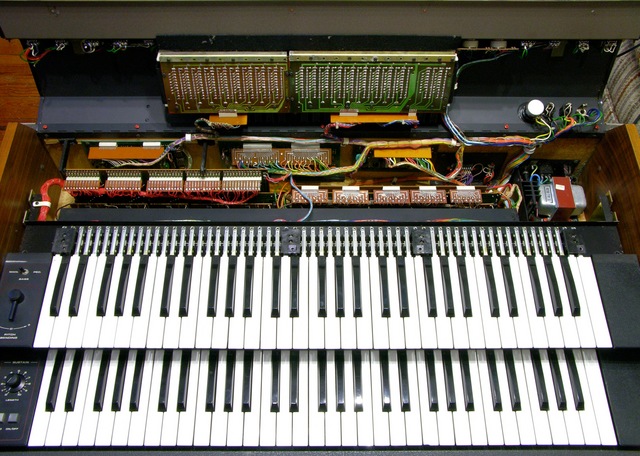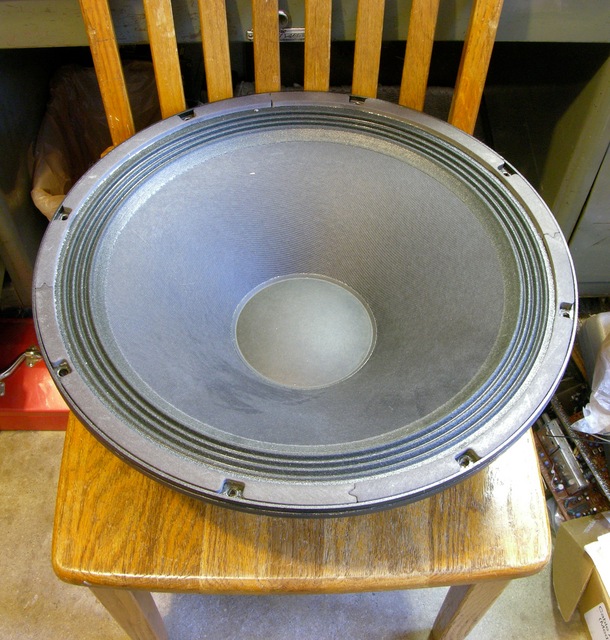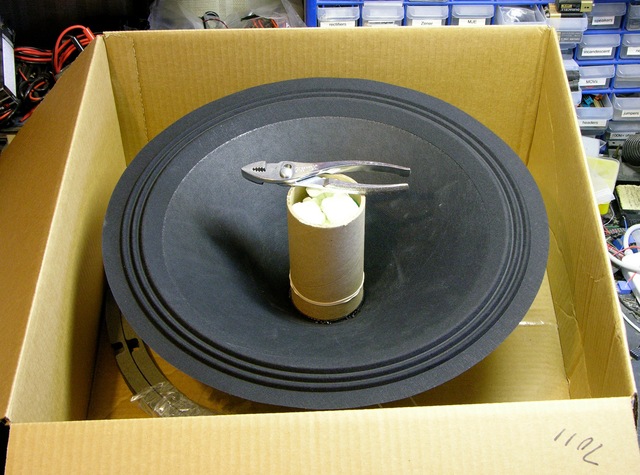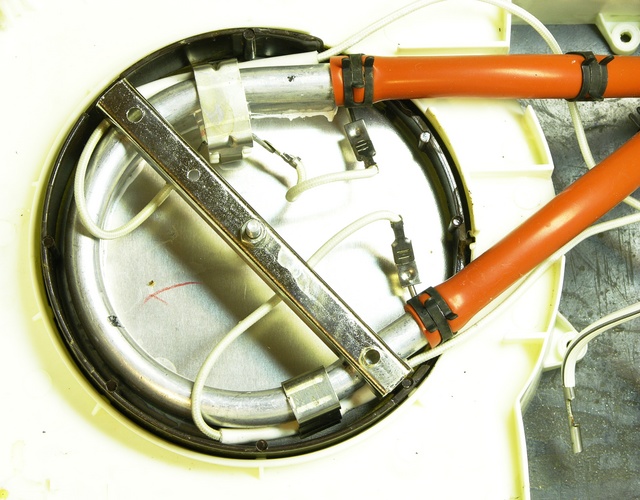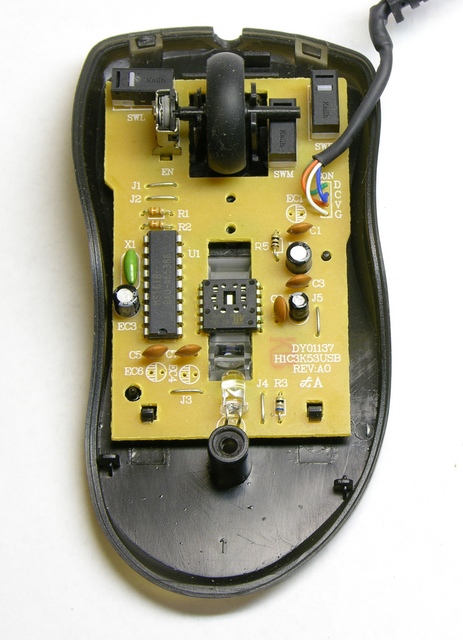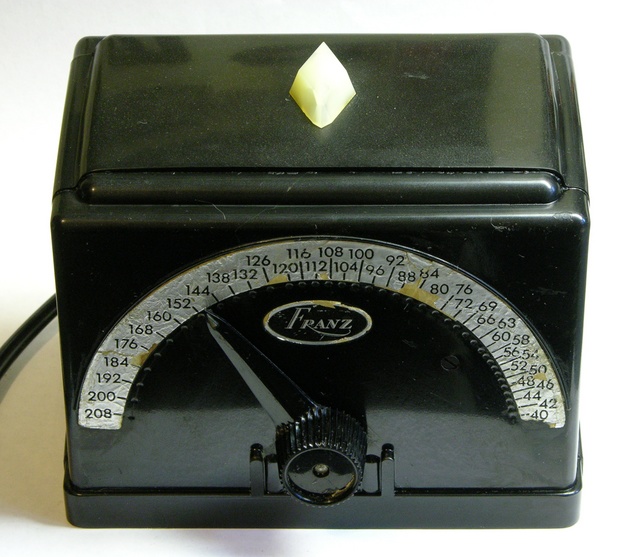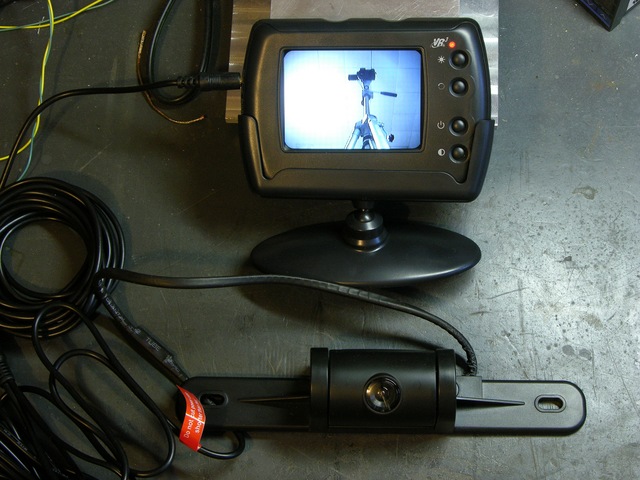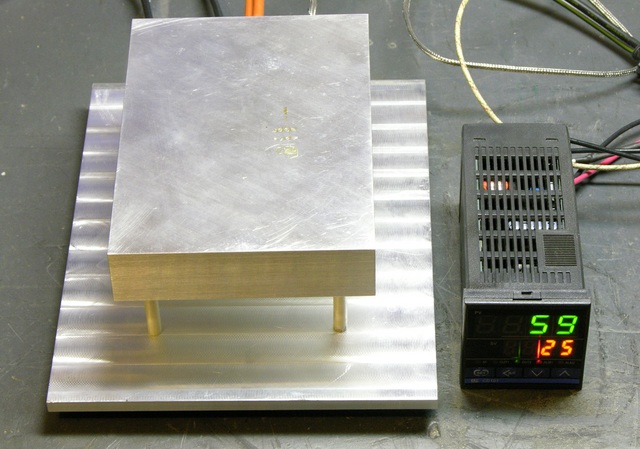I don’t have a Blu-ray player yet, but I’m doing the same thing I did when I switched from VHS to DVD — buying in the new media when I think prices are reasonable, then buying a player after I have enough media to justify it.

Here’s one of my first such purchases, with the cover image obfuscated to protect the copyright-holder’s interest in their artwork. (Note that this is one of my highly-favored movies and I already have two different DVD editions. Wouldn’t want anyone to think this was the first copy I was buying.)
You can see that Target somehow neglected to remove my purchase from their theft-prevention case. I don’t know how that happened, but I do have the receipt. I could easily have ruined the case (bandsaw) to remove my movie, but that would have been so inelegant.
Please use this information only for good.
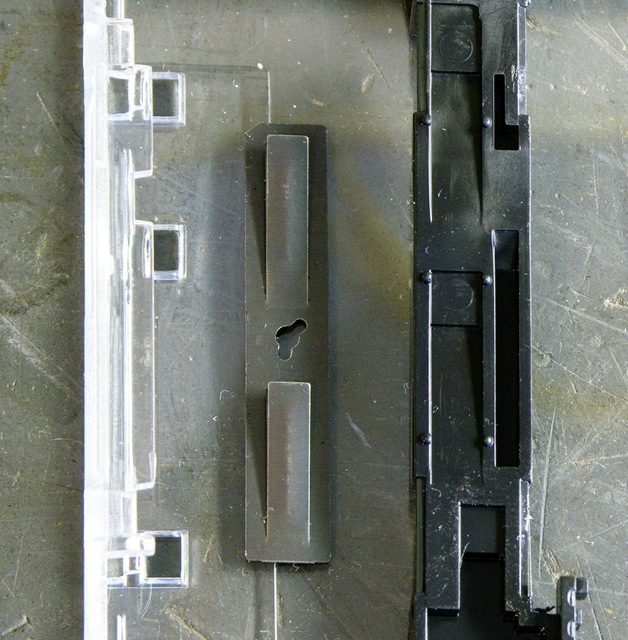
The case hinged open at the bottom of the movie and was held closed by a sliding black plastic strip at the top, shown disassembled here. The strip locks the case shut and in turn is prevented from sliding to the open position by two ratcheting leaves protruding from a metal strip that’s pinned to the case.
Examining the case, I couldn’t find holes where pins could enter to withdraw the leaves, so I guessed magnets. The metal strip did seem to be attracted to magnets, but the ones I had on hand weren’t strong enough to pull the leaves. I knew I had to find a sacrificial hard drive to take apart.
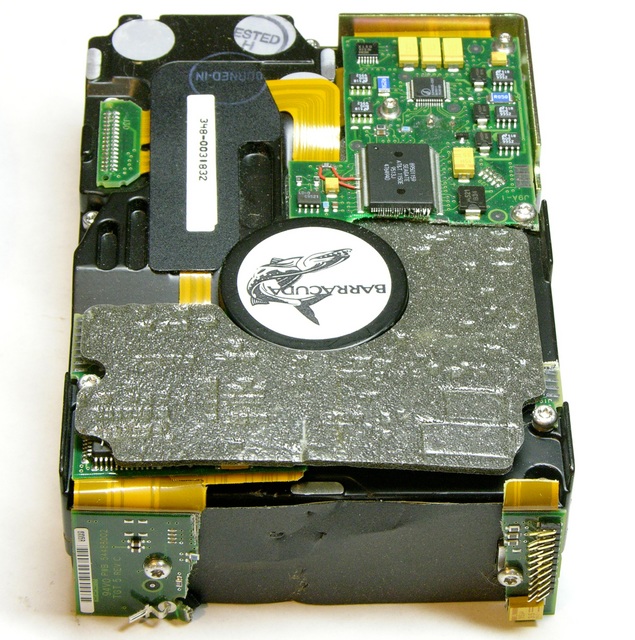
I got this drive that had been removed from a decommissioned PC at work and, um, “read-protected” by one of our technicians. (I’m afraid it may not have been zeroed first, and I’m hanging onto the platters until I can figure out whether I have something strong enough to degauss them.)
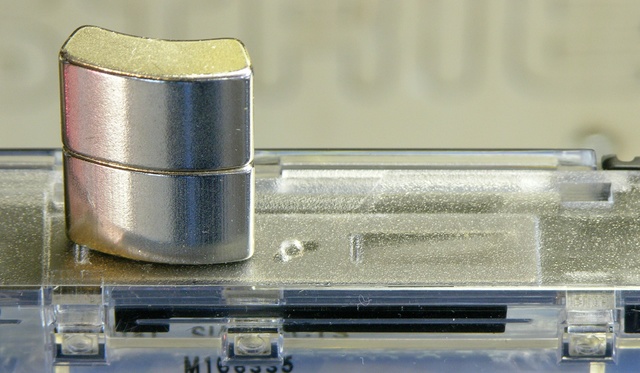
The permanent magnets from the head-positioning assembly retract the leaf springs quite nicely, allowing me to slide the locking strip and open the case. Of course I actually held one magnet on each spring to unlock it, but I wasn’t able to keep them that way for the photo.
Voila! One open case, and one more Blu-Ray movie for Keith.
